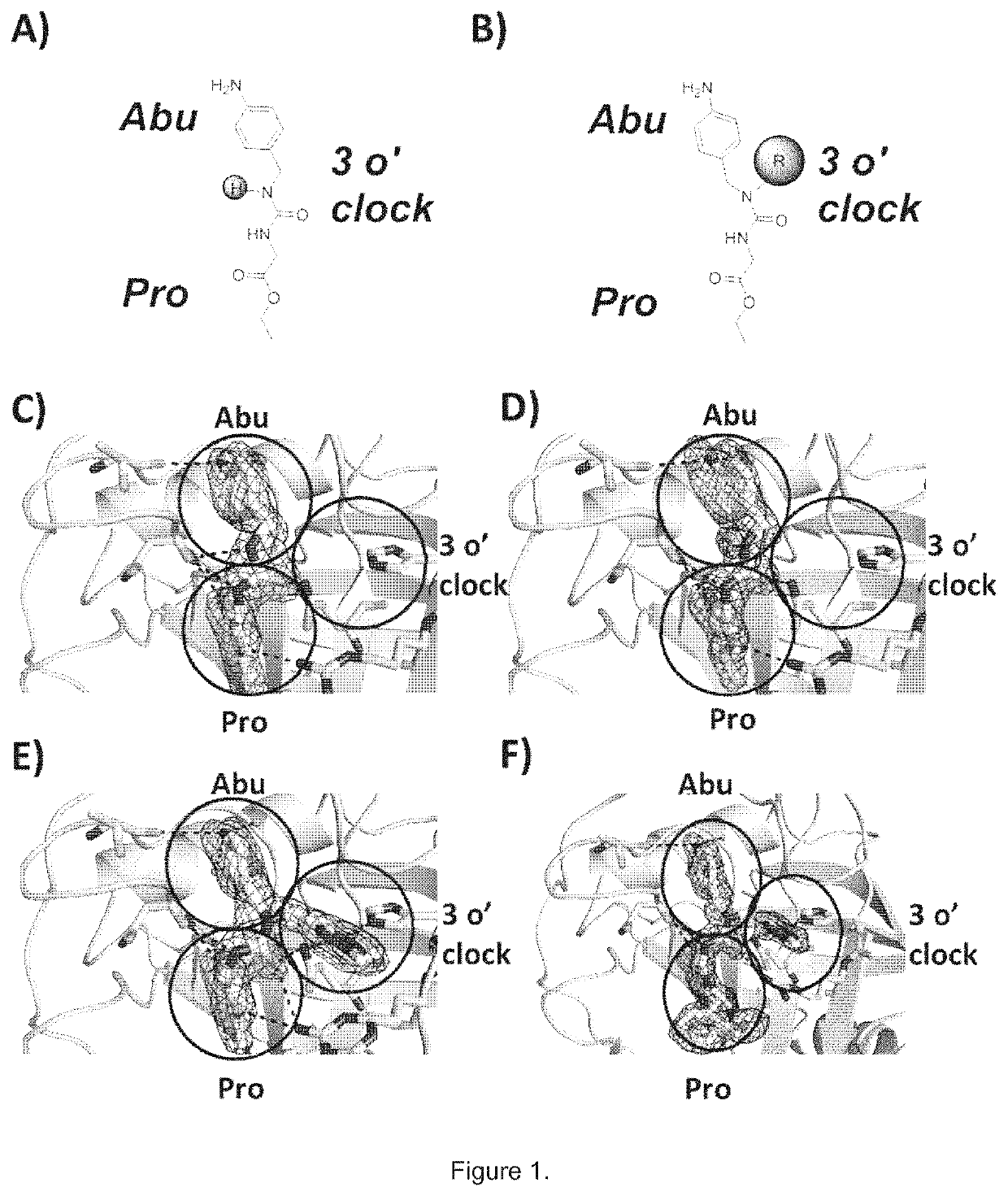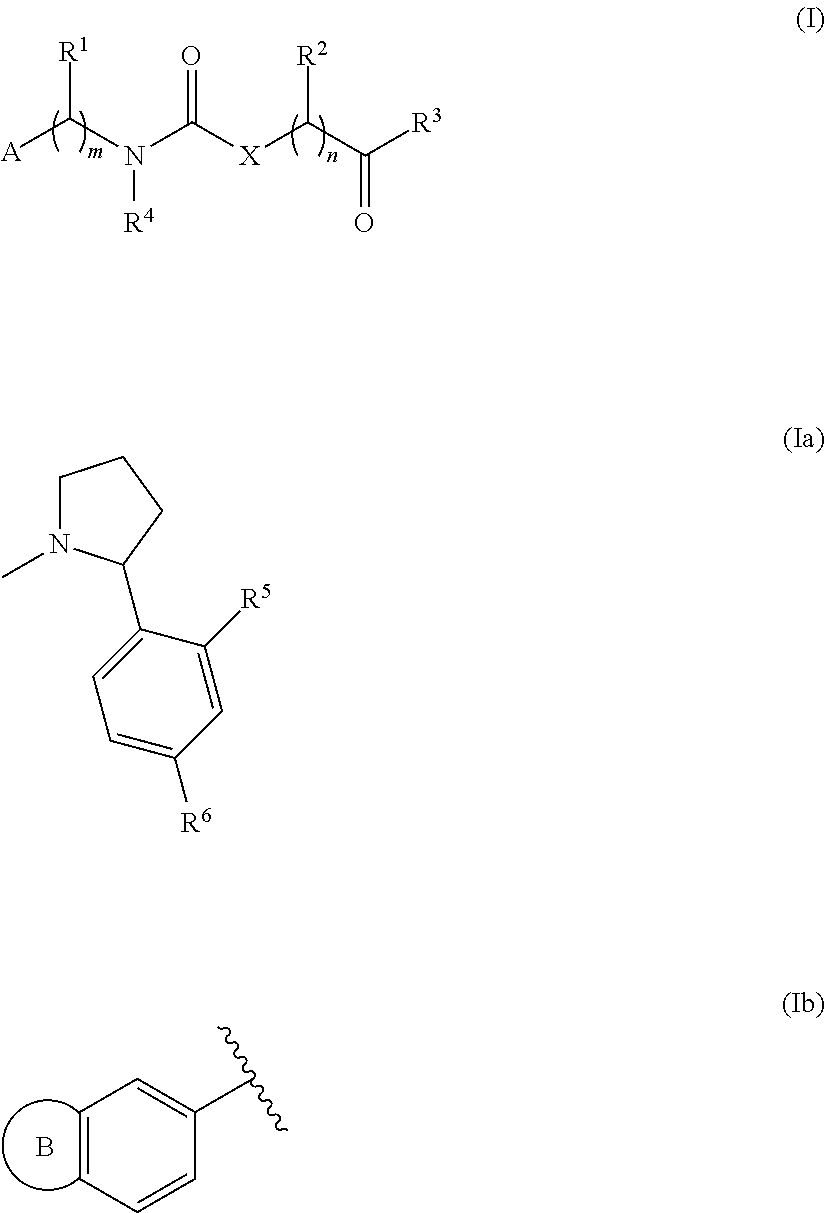Compounds for the modulation of cyclophilins function
a technology of cyclophilins and compounds, applied in the field of compounds for the modulation of cyclophilins function, can solve the problems of limited use of csa and only crossing the blood-brain barrier to a very limited exten
- Summary
- Abstract
- Description
- Claims
- Application Information
AI Technical Summary
Benefits of technology
Problems solved by technology
Method used
Image
Examples
Embodiment Construction
of Selected Compounds
[0084]Compounds have been prepared by the synthetic procedures shown in Scheme 1.
[0085]The first key intermediate of the synthesis, namely the substituted amino derivative, can be prepared from either p-nitrobenzaldehyde using a reductive amination procedure, or from a p-nitrophenyl derivative by a nucleophilic substitution reaction. The urea moiety is obtained by reaction with ethyl isocyanatoacetate. After hydrolysis of the ester, the corresponding carboxylic acid undergoes an amide coupling reaction with the haloarylpirrolidine derivative. Reduction of the nitro group led to the synthesis of the desired final products. Where intermediates were not commercially available, they were prepared according to reported procedures. Details concerning the preparations methods are provided below.
[0086]Chemicals, Materials, and Methods
[0087]Abbreviations used in the description of the examples that follow are: Acetonitrile (MeCN); ammonium chloride (NH4Cl); BnBr (benzyl ...
PUM
| Property | Measurement | Unit |
|---|---|---|
| temperature | aaaaa | aaaaa |
| temperature | aaaaa | aaaaa |
| temperature | aaaaa | aaaaa |
Abstract
Description
Claims
Application Information
 Login to View More
Login to View More - R&D
- Intellectual Property
- Life Sciences
- Materials
- Tech Scout
- Unparalleled Data Quality
- Higher Quality Content
- 60% Fewer Hallucinations
Browse by: Latest US Patents, China's latest patents, Technical Efficacy Thesaurus, Application Domain, Technology Topic, Popular Technical Reports.
© 2025 PatSnap. All rights reserved.Legal|Privacy policy|Modern Slavery Act Transparency Statement|Sitemap|About US| Contact US: help@patsnap.com



